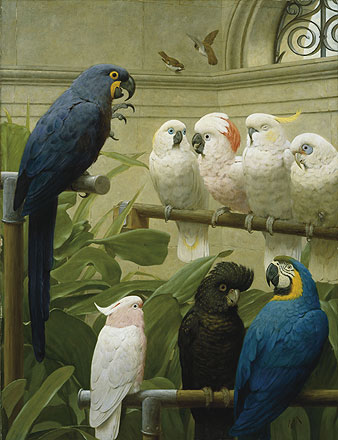The classical author Macrobius wrote that immediately after Julius Caesar had defeated Mark Anthony, at the battle of
All this is by way of background information to the Barber Institute’s light-hearted but thoroughly engaging exhibition, “The Parrot in Art from Durer to Elizabeth Butterworth”. Strictly speaking, this discursive exploration of the parrot’s place in the history of art begins not with Durer but a little earlier. Its first image is a slightly foxed, battered but moving little woodcut, created by an unknown German artist in the third quarter of the fifteenth century. The subject of the picture is the Christ child, who is depicted naked, sitting on a patterned cushion perched on a grassy mound. He is schematic of form and face, but this is an image, nonetheless, full of intimacy and tenderness. On his lap he holds a parrot – to be specific, a Long-tailed Green Parakeet – cradling it in such a way that its head brushes his cheek. It seems that the print was originally designed as a New Year’s greeting card. The image of Christ and the prophetic parrot – bearer of good news about the future – was intended to bring a message of hope for the year...


